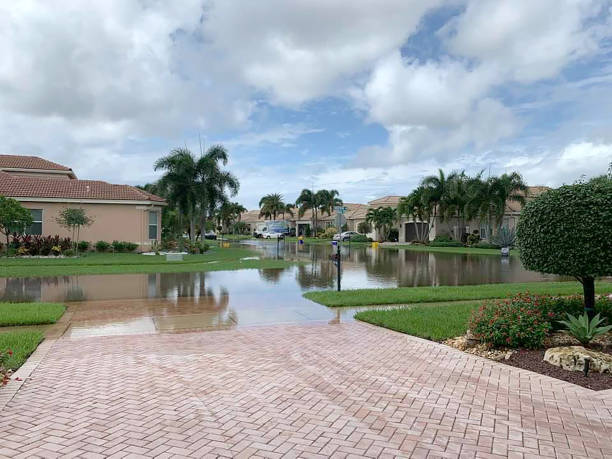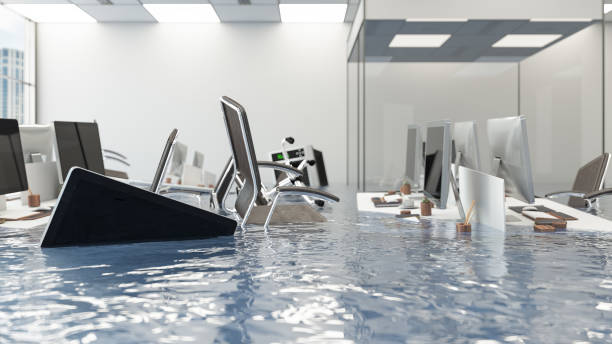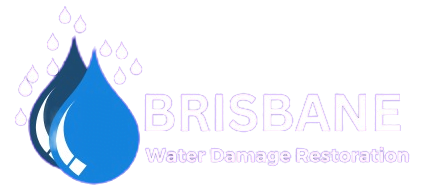Efficient Structural
Drying and
Restoration Services
Choose Water Damage Restoration Brisbane for expert structural drying and restoration. Our industry experts have years of experience and use state-of-the-art technology to handle different types of water damage.
Schedule A Consultation
EFFICIENT STRUCTURAL DRYING AND RESTORATION SERVICES
Choose Water Damage Restoration Brisbane for expert structural drying and restoration. Our industry experts have years of experience and use state-of-the-art technology to handle different types of water damage.
Schedule A Consultation
When it comes to water damage, the aftermath can be devastating. From personal items to entire structures, the damage can be overwhelming. That’s why it is crucial to have a professional team by your side that understands the importance of structural restoration and drying. We will delve into the categories of water damage, the advanced techniques used in mitigation, and the significance of inspection equipment during restoration. We will also discuss how powerful commercial dehumidifiers can be compared to retail humidifiers and give you an insight into the phases of structural drying and other effective methods of drying. When choosing a water damage restoration team in Brisbane, you need one with experience and compassion. One who understands that your home is more than just a structure but a place filled with memories. That’s why you should choose Water Damage Restoration Brisbane – experts in their field ready to help restore your home or business to its former glory.

Understanding the Importance of
Structural Restoration &
Drying
Rapid water damage restoration is crucial to prevent long-term damage to your property. It helps in preventing further damage to building materials and ensures the structural integrity of your premises. By availing professional restoration services, you can be assured of industry-standard structural drying techniques. These experts utilize state-of-the-art equipment like dehumidifiers and air movers to aid in the drying process. With their experience and expertise, they employ the latest technology to restore your property efficiently. They understand the significance of the structural drying process and its impact on preventing mold growth and minimizing the risk of secondary damages. So, homeowners in Brisbane and surrounding areas should rely on professionals trained by IICRC for efficient structural drying and restoration.
The Role of Water Damage Restoration in Brisbane
Water damage restoration services play a crucial role in mitigating the effects of flooding in Brisbane. Skilled professionals utilize advanced drying techniques to effectively remove excess water from affected areas. The restoration process involves thorough drying, dehumidification, and mould prevention to prevent further damage to the structure. Expert restoration services in Brisbane have years of experience dealing with water damage and understand the unique challenges it presents. Trained professionals utilise moisture meters to assess the moisture content in the affected areas, ensuring that no remaining moisture goes unnoticed. By employing these specialized techniques and equipment, water damage restoration professionals help homeowners recover their belongings and restore their homes to their former glory.
Water Damage
Water damage can be categorised into three types: clean water, grey water, and black water. Clean water damage refers to water from a sanitary source such as a broken pipe. On the other hand, grey water damage involves water that is contaminated with chemicals or microorganisms. Lastly, black water damage is highly contaminated and contains sewage or other hazardous substances. Proper identification of these categories is crucial as it helps determine the appropriate restoration methods. This ensures that the structural drying process is carried out effectively and the remaining moisture is removed. By understanding the different categories of water damage, homeowners can take necessary steps to protect their belongings and ensure the safety of their surrounding areas.
Techniques for Mitigation
Efficient structural drying and restoration require advanced techniques to mitigate water damage effectively. Evaporation and dehumidification play crucial roles in the drying process. By using air movers, airflow is maximised, aiding in the evaporation of moisture from the affected area. Additionally, dehumidifiers remove excess moisture from the air, promoting efficient structural drying. These proper drying techniques are essential to prevent the growth of mould and mildew. Homeowners in Brisbane and surrounding areas can trust professionals trained by IICRC to employ these advanced techniques. With our expertise in flood damage restoration, we ensure that remaining moisture is thoroughly eliminated from carpets, upholstery, and belongings. This comprehensive approach ensures a successful structural drying process.
Proper assessment is crucial in water damage restoration. Inspection equipment plays a vital role in this process, ensuring accurate evaluation and effective restoration. Moisture meters are used to identify the extent of water damage and measure moisture levels in building materials. They help in locating hidden pockets of moisture that may not be visible to the naked eye. Thermal imaging cameras, on the other hand, are instrumental in detecting concealed areas of moisture. By utilising advanced inspection equipment, such as these, professionals can save time and prevent further damage. This ensures that the structural drying and restoration process is efficient and thorough.
Proper control of humidity is crucial in accelerating the structural drying process. By maintaining optimal humidity levels, condensation can be prevented, and the overall drying process can be promoted. Additionally, temperature and airflow play important roles in evaporation. Controlling these factors aids in the removal of moisture from the affected area. Balanced airflow ensures even drying throughout the space, while monitoring these variables is essential for successful structural drying. Homeowners should understand that the structural drying process is complex and requires professional assistance for effective results. Don’t let flood damage or water-related issues linger in your home—seek expert help from certified professionals well-versed in structural drying and restoration techniques.



Commercial dehumidifiers play a crucial role in efficient water damage restoration. These powerful tools have the ability to extract a significant amount of water vapour from the air, aiding in the reduction of relative humidity levels. By doing so, they facilitate the drying process of structural materials. Designed to handle large-scale restoration projects, commercial dehumidifiers offer high-capacity performance, expediting the drying time of affected areas. With their advanced technology and capabilities, these dehumidifiers are essential for ensuring effective structural drying. Homeowners and professionals rely on them to remove excess moisture, prevent further damage, and protect belongings.
Commercial dehumidifiers offer superior moisture removal capacity compared to retail humidifiers. Designed for industrial-level water damage restoration, they ensure efficient and prompt drying. Investing in a commercial dehumidifier is crucial for effective structural restoration.
Effective structural drying and restoration is a crucial process when dealing with water damage. Understanding the phases involved can help prevent further damage and ensure complete recovery. The first phase focuses on removing excess water and moisture from the affected area. This involves efficient extraction using specialized equipment and techniques to minimize damage to the structure. The second phase involves dehumidification, which aims to extract moisture from the air, reducing humidity levels and facilitating the drying process. Finally, constant monitoring is essential to ensure the complete drying of all materials, including hard-to-reach areas and belongings. Properly executed structural drying prevents permanent damage to your property and eliminates the risk of mold growth. By following these phases, homeowners can restore their properties efficiently and effectively.
When it comes to structural drying and restoration, there are several effective methods that can be utilised for efficient moisture removal. One such method is the use of low-grain refrigerant dehumidifiers. These dehumidifiers are specifically designed to effectively dry structures and extract moisture from the air. Another effective method is the use of air scrubbers, which not only aid in removing mold spores but also improve the overall air quality during the drying process. Additionally, specialized drying chambers can be used to complement the structural drying process, ensuring thorough restoration. Desiccant dehumidifiers are also a viable option for efficient moisture removal. By utilising a combination of these drying methods, homeowners can ensure that all remaining moisture is effectively removed from their belongings and surrounding areas.
Choose Water Damage Restoration Brisbane for expert structural drying and restoration. Our industry experts have years of experience and use state-of-the-art technology to handle different types of water damage. We comply with industry standards, respond quickly, and minimise further damage.
Structural drying should not be attempted without professional help. Specialised knowledge and equipment are required for accurate moisture assessment, proper airflow, and dehumidification techniques. Professionals can also identify hidden moisture pockets to ensure complete drying. DIY drying may lead to inadequate results and potential mould growth.

Conclusion
Structural restoration and drying are crucial when dealing with water damage. It not only helps restore the affected area but also prevents further damage and mould growth. At Water Damage Restoration in Brisbane, we understand the importance of prompt and professional restoration services. Our team of experts is equipped with advanced drying techniques and inspection equipment to ensure thorough and efficient restoration. Whether it’s residential or commercial properties, our commercial dehumidifiers are powerful enough to handle any size of water damage. Don’t risk further damage by trying to handle it yourself. Contact Water Damage Restoration Brisbane today for professional and reliable restoration services. Let us help you restore your property to its pre-damaged condition. Get in touch with us now for a free consultation.
Contact Details
- (07) 3555 6747
-
Service Areas:
Brisbane QLD ,Australia
New Farm QLD 4005 ,Australia - Suite 478,241 Adelaide Street, Brisbane QLD 4000
Opening Hours
- Monday: Open 24 hours
- Tuesday: Open 24 hours
- Wednesday: Open 24 hours
- Thursday: Open 24 hours
- Friday: Open 24 hours
- Saturday : Open 24 hours
- Sunday: Open 24 hours
Get In Touch
Leave us your info, and we will get back to you.
